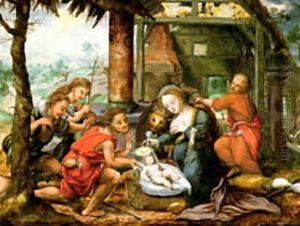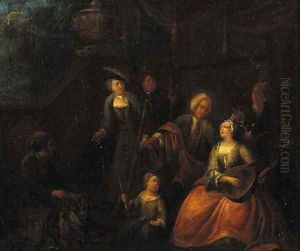Verbeeck or Verbeecq, Franz Paintings
Franz Verbeeck or Verbeecq was a Flemish painter known for his contributions to the Baroque movement, a style characterized by its dramatic use of color, light, and movement. Born in 1634 in Mechelen, a city in the Southern Netherlands (present-day Belgium), Verbeeck was part of a region that was a significant center for art and culture during the 17th century. Despite the political and religious upheavals of the time, the Southern Netherlands, under Spanish rule, remained a vibrant hub for artists, who often depicted religious themes, landscapes, still lifes, and genre scenes with a distinctive flair that combined realism with emotional intensity.
Verbeeck's work, though not as widely known today as some of his contemporaries, such as Peter Paul Rubens or Anthony van Dyck, demonstrates the typical Baroque fascination with light, shadow, and movement. He was particularly adept at capturing the dynamic expressions of his subjects, whether in religious scenes or in more mundane, everyday moments, thereby imbuing his paintings with a sense of immediacy and emotional depth.
Details about Verbeeck's training and early career are scarce, but it is believed that he was part of the vibrant artistic community in Mechelen and possibly Antwerp, where he would have been exposed to the works of the leading Flemish painters of the day. This exposure would have influenced his development as an artist, as evidenced by the stylistic similarities between his paintings and those of the more prominent figures of the Flemish Baroque.
Throughout his career, Verbeeck achieved a measure of success and recognition among his peers and patrons. However, like many artists of his time, he struggled with the economic uncertainties that came with the artist's life in the 17th century. Despite these challenges, his work continued to exhibit the high degree of skill and emotional resonance that characterized the best of Flemish Baroque painting.
Franz Verbeeck died in 1681, leaving behind a modest but impactful body of work that continues to be studied and appreciated by art historians and lovers of Baroque art. His paintings, while not as prolific or as widely recognized as those of some of his contemporaries, provide valuable insights into the cultural and artistic milieu of the Southern Netherlands during a particularly turbulent yet artistically vibrant period in European history.

